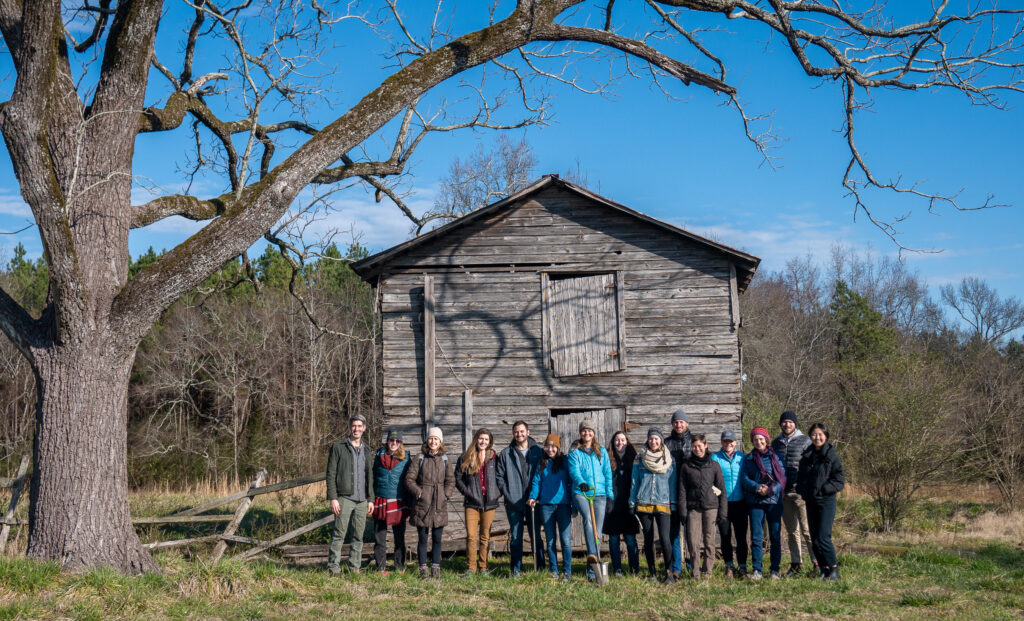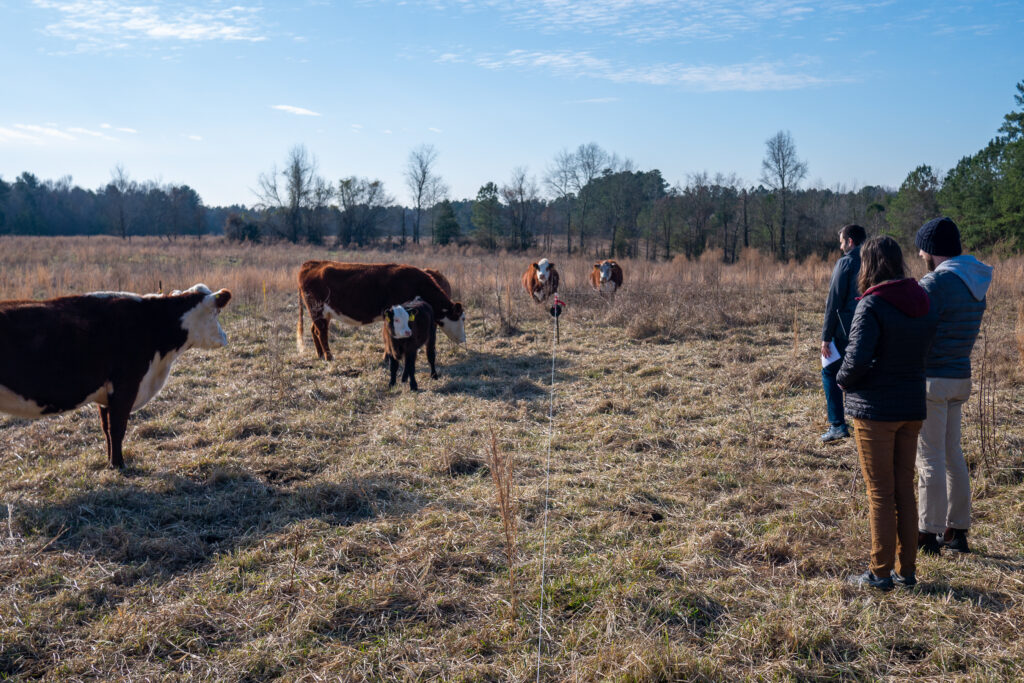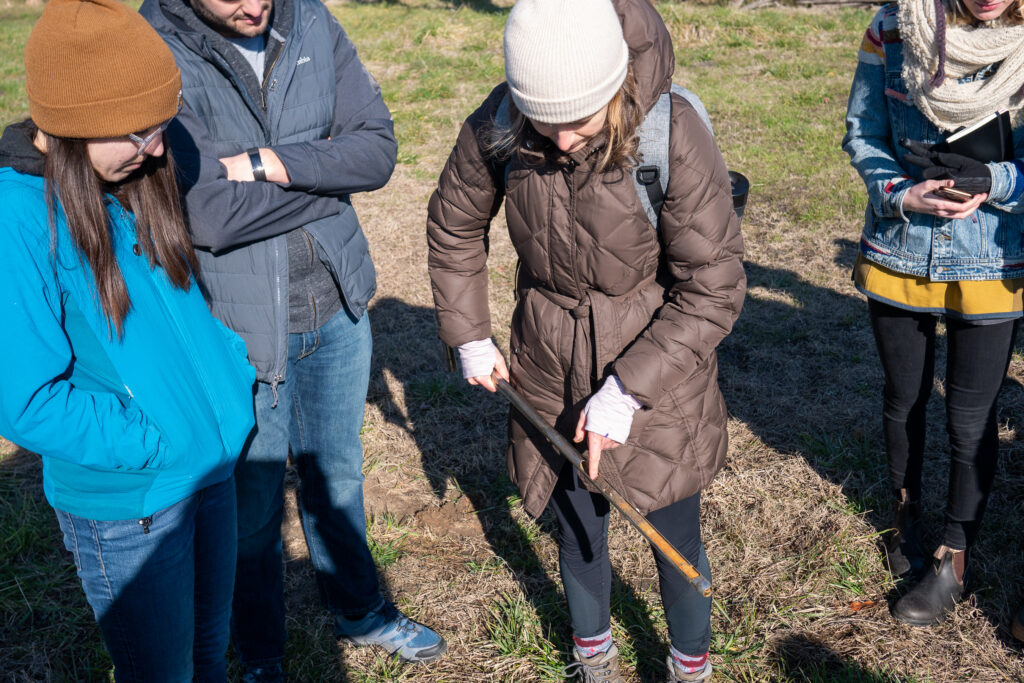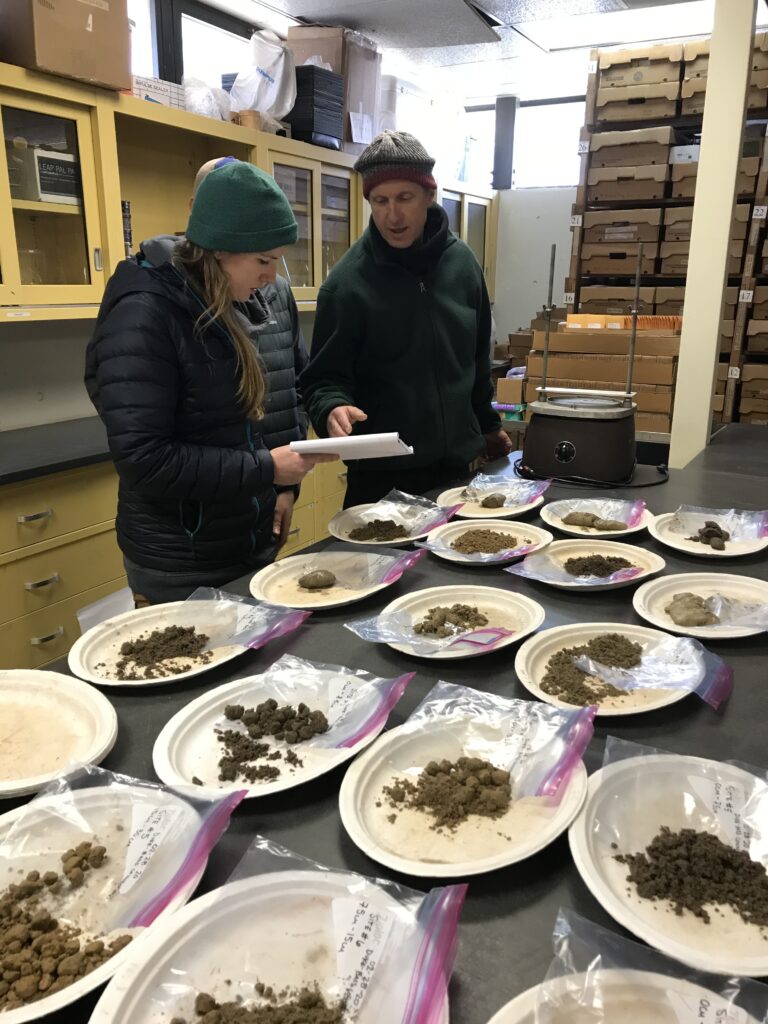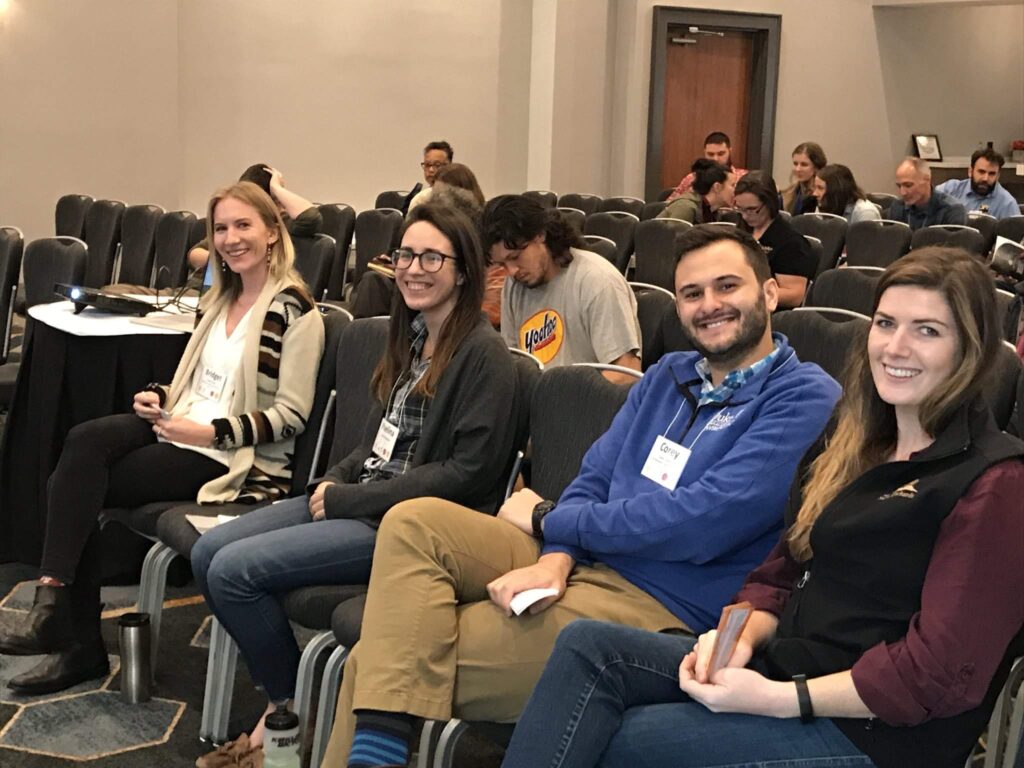Final report for OS19-125
Project Information
The 2018 IPCC report states that previous climate change predictions were drastic underestimates, and warming must be capped at 1.5 degrees to avoid extreme climate disruptions. There is potential for agriculture, representing 13.5 percent of global GHG emissions, to cut its emissions and store additional CO2 in soil.
Cattle are the largest contributor to agricultural emissions, but the work of Franzluebbers and Stuedemann (2010) shows promising results for pasture-based carbon sequestration as a climate solution in the Southeast U.S. This is further validated by Drawdown.org’s evaluation of climate solutions that include silvopasture, regenerative agriculture, conservation agriculture, and managed grazing all within the top 20 most impactful efforts. Industrial cattle production is dominant in the U.S., but globally contributes only 10 percent of total beef produced. The Southeast region, unlike the feedlot scenarios dominant within the top 5 cattle producing states, is typified by smaller pasture based cattle operations and represents about 20 percent of the national herd. By targeting pastured cattle, we seek to build solutions that prioritize equity by supporting small scale graziers in the Southeast who are often excluded by USDA and Farm Bill policies, and is also globally applicable. Small-scale systems are more adaptable, while support for graziers assist rural economic development and resilience-building for the impacts of climate change.
Best management practices within pastured cattle scenarios are being discussed through educational programming, such as the NC State Extension Service’s Amazing Grazing program that leads on-farm training workshops to spread this knowledge. Adoption of these practices could have significant soil health and climate impacts, however the level of BMP adoption, reasons for adoption, the degree to which they’re understood, and identification of what barriers exist to their increased use are knowledge gaps that prevent the proliferation of these practices. More data is needed to address these specific knowledge gaps and unlock the potential that these BMPs represent.
While efforts like the Amazing Grazing workshops attract farmers and educate about BMPs, the soil health and climate impact of adopting these practices is still not understood and difficult to predict. Increased data collection and analysis focusing on soil health and climate impact are necessary to fully evaluate the BMPs. Quantifying who is using BMPs and to what result is lacking in the literature around these practices, as is a comparison of the outcomes between BMP users and non-users. A fuller understanding of the true impact BMPs represent could increase buy-in of the grazier community in this region and lead to increased adoption of the practices. This data could also result in a more complete understanding of why those who have already adopted the BMPs have chosen to do so, and what has kept others from implementing them.
The team will use research at pilot sites and input from a diverse stakeholder group to assess both the true impact BMPs represent and barriers to their wider implementation. Informal surveys will inform why BMPs have already been adopted, as well as barriers to their adoption. Once we identify barriers to BMP adoption, the team will seek solutions to lower these barriers. We plan to use data and stakeholder engagement to produce educational materials that contribute to the field of soil science, and policy recommendations to promote BMPs. The project will also seek to bolster the NC State Extension Services’ Amazing Grazing workshops, and track environmental health benefits.
The project assumes implementation cost is an existing barrier to wider BMP adoption, and will begin exploring methods to address it. One potential solution that will be examined is generating revenue through BMP adoption using the sale of carbon offsets. We will assess the development of a carbon offset protocol and guidance material to allow farmers to access the carbon market. A protocol for pastured cattle operations would quantify GHG emissions from soil, fertilizer, feed and fuel within pasture systems and reward ranchers who reduce these inputs and store carbon within their pastures. Ideally, this effort will support existing small pasture operations, targeting farmers excluded from traditional incentive programs. The project will also assess the creation of a valued-added certified carbon neutral beef standard that may represent additional opportunity for small-scale pasture systems to generate more revenue from their production and adoption of BMPs. Adoption of BMPs could be monetized after measuring the increase carbon storage these practices result in, resulting in increased revenue for farmers through sale of carbon credits and by a value-added carbon neutral beef certification.
Another solution this project offers is gathering and sharing knowledge about the use of BMPs. Quantifying and comparing soil quality measurements at sites that implement BMPs to those that don’t will result in a better understanding of their efficacy. This information would then be shared with the larger pastured grazing systems audience in the region through existing outreach and education platforms, such as Amazing Grazing.
We will conduct field research at no less than three pilot sites to expand our understanding of the use of small pasture system BMPs, and what effect these practices have on soil health and climate impact.
This research will consist of taking soil samples for assessment of soil carbon and an examination of management practices, including use of nitrogen fertilizer, tillage frequency, and type and amount of feed used to supplement forage.
We will also conduct informal surveys with farmers associated with pilot sites to gain further insight into why those who already employ BMPs have adopted those practices, and identify barriers to further adoption.
Cooperators
- (Educator and Researcher)
- (Educator and Researcher)
Research
Our project involved a team of instructors from a diverse range of Duke University research centers (the Duke Campus Farm, the Duke Carbon Offsets Initiative, the Duke Environmental Law and Policy Clinic) leading a team of undergraduate and graduate students in a year-long Bass Connections project. Bass Connections is a Duke program that “bridges the classroom and the real world, giving students a chance to roll up their sleeves and tackle complex societal problems alongside faculty from across Duke.” The project focused on regenerative grazing in North Carolina, and sought to educate students about regenerative grazing while working towards expanding the use of these practices in the state. It has since gone on to a second iteration (ending 4/23/2021), and is planning on continuing for a third year.
Before the full project team convened, one student traveled the state to conduct site visits at beef operations, conducting informal surveys to learn from the experiences of those already implementing regenerative grazing practices. The survey collected basic information such as acreage, livestock population, etc., but also documented use of specific practices such as livestock rotation type and frequency, livestock containment practices, amount of supplemental haying, and fertilizer use. The student traveled to cattle operations that were already implementing at least one management tool that could be considered part of a regenerative grazing system, including:
- Circle D Farm in China Grove, NC
- Beaver Creek Farms in Mount Airy, NC
- Rogers Cattle Company in Roxboro, NC
- Triple Creek Ranch in Oxford, NC
- Reverence Farms in Graham, NC
- An undisclosed operation near Asheville, NC
This student also conducted research on carbon markets and assessed various regenerative grazing carbon offset protocols that farmers may leverage to generate carbon financing. This research included analyzing seven carbon offset protocols, including the Climate Action Reserve's Grassland Project Protocol, the American Carbon Registry's Avoided Conversion of Grassland Protocol & Methodology for Grazing and Livestock Management, Verra's Soil Carbon Quantification Methodology & Fire and Grazing Protocol, and the Alberta Government's Reducing Greenhouse Gas Emission from Fed Cattle methodology. The student's findings were that two of these protocols (the American Carbon Registry's Avoided Conversion of Grassland Protocol & Methodology for Grazing and Livestock Management and Verra’s Methodology for Adoption of Sustainable Grassland Adjustment of Fire and Grazing) aligned closely with what we understand domestic regenerative grazing to be, and may be good options for farmers to use to generate carbon financing.
Once the academic term began, the full team conducted soil sampling at a test site (the Triangle Land Conservancy’s Bailey and Sarah Williamson Preserve) to operationalize a soil sampling methodology that the student team developed, and to measure the baseline conditions at this site that may host future research. This test site employs the rotational grazing of beef cattle, so future student teams will use these baseline measurements to monitor changes in soil characteristics and carbon sequestration over time.
In the first year of the project, the student team collected and analyzed soil samples from the Williamson Preserve. These samples were collected to measure baseline soil characteristics, including soil carbon content, as the pastures will be regeneratively grazed by cattle in the future (see results in the table below). Future soil samples will be compared to this baseline data so this data is essential in understanding how regenerative grazing practices impact soil carbon. As our project continues we plan to run this site as a long-term monitoring experiment, however we were unable to return to the site in the second year of the project due to the Coronavirus.
| STBA | |||||||
| Lab ID | Random # | Site | Depth | Dry Wt. g | CMIN Days 0-3 mg/kg OD soil | TN mg N/g soil | TC mg C/g soil |
| 3 | 0.74 | 1 | 1 | 85.5 | 163.82 | 1.462 | 17.169 |
| 9 | 0.68 | 1 | 2 | 101.6 | 27.70 | 0.427 | 4.883 |
| 17 | 0.97 | 1 | 3 | 178.4 | 21.68 | 0.314 | 3.346 |
| 5 | 0.82 | 2 | 1 | 73.7 | 168.64 | 1.522 | 19.024 |
| 12 | 0.89 | 2 | 2 | 87.5 | 63.84 | 0.568 | 6.291 |
| 15 | 0.88 | 2 | 3 | 127.4 | 26.50 | 0.364 | 3.600 |
| 1 | 0.35 | 3 | 1 | 86.5 | 143.34 | 1.332 | 16.074 |
| 7 | 0.27 | 3 | 2 | 103.6 | 34.93 | 0.500 | 6.253 |
| 16 | 0.96 | 3 | 3 | 197 | 9.64 | 0.256 | 2.966 |
| 2 | 0.62 | 4 | 1 | 87.1 | 99.98 | 1.110 | 14.015 |
| 10 | 0.70 | 4 | 2 | 102.3 | 34.93 | 0.473 | 4.701 |
| 14 | 0.48 | 4 | 3 | 105.9 | 14.45 | 0.222 | 2.849 |
| 6 | 0.89 | 5 | 1 | 91.3 | 168.64 | 1.462 | 15.927 |
| 8 | 0.41 | 5 | 2 | 103.4 | 31.32 | 0.434 | 4.944 |
| 13 | 0.31 | 5 | 3 | 173.6 | 34.93 | 0.332 | 3.493 |
| 4 | 0.74 | 6 | 1 | 104.2 | 71.07 | 0.969 | 12.406 |
| 11 | 0.81 | 6 | 2 | 60.3 | 28.91 | 0.474 | 5.553 |
Our project also collected qualitative data through various surveys and case studies. Before the first year of the project, a student traveled the state to conduct site visits at beef operations, conducting informal surveys to learn from the experiences of those already implementing regenerative grazing practices. The survey collected basic information such as acreage, livestock population, etc., but also documented use of specific practices such as livestock rotation type and frequency, livestock containment practices, amount of supplemental haying, and fertilizer use. The student traveled to cattle operations that were already implementing at least one management tool that could be considered part of a regenerative grazing system. This informal survey information helped our team understand what different types of practices are currently in use in North Carolina, and what types of operations are using regenerative practices.
In the second year of the project students conducted additional interviews to showcase farmers’ use of regenerative grazing techniques in the state of North Carolina, specifically noting benefits farmers have encountered as a result. They found that limited research had been done on this topic in quantifying the cost of implementing regenerative practices as well as their returns on investment. Their product attempts to supplement this lack of concrete benefits and costs by interviewing multiple North Carolina farmers and agriculture-stakeholders about their own experiences. To supplement the case study content, the students included additional resources are at the end of their report. There is a contact list for farmers included in this report as well as a list of funding opportunities and education resources for use. While this team doesn't consider their report a comprehensive analysis (due to the lack of immediate resources and time constraints), they do view it as a starting point for learning. This document can help share farmer knowledge with others and educate people on alternative grazing practices, specifically in a North Carolina context.
Educational & Outreach Activities
Participation Summary:
The team published one newsletter which was sent to 48 key contacts. The newsletter updated recipients as to the activities of our students and team, including the site visit the class went conducted at Rogers Cattle Company, and the discussions our team had with Sarah Blacklin and Lee Menius from NC Choices, Jennifer Curtis of Firsthand Foods, Robert Bonnie (current Deputy Chief of Staff for Policy and Senior Advisor, Climate, in the Office of the Secretary at USDA), and Dr. Brian Murray (Duke University faculty).
The project team also created the website RegenerativeGrazingNC.org as an outreach tool. The website communicates the work the team has done, including the carbon offset protocol and soil sampling methodology, policy proposals, and links to other resources for farmers. The website is actively being maintained and its content updated as research continues and additional products and resources are developed. The website is an excellent outreach tool, as it is easy to share and adapt to the needs of its audience.
Additionally, we sent some of our student and instructor team to various regenerative agriculture conferences, including the Quivira and Southern Sustainable Agriculture Working Group (Southern SAWG) conferences. We wanted to grow the network of producers we had contact with and could learn from, and also wanted venues to share the results of our research. The team benefited from hearing the results of other regenerative agriculture research and projects at these conferences. A team of our students also presented at the Carolina Farm Stewardship Association (CFSA) annual conference in 2019. They presented the project’s policy research and proposals, as well as the research into regenerative grazing carbon offset projects.
Learning Outcomes
Project Outcomes
The project produced two sets of deliverables in its first year. First, the team used its extensive research and expertise in carbon markets to develop a carbon offset protocol for regenerative grazing tailored to North Carolina operations.This protocol included an accompanying soil sampling methodologyand was field-tested using baseline soil measurements at a pilot site, the Bailey and Sarah Williamson Preserve, worked by Newbold Farms. Informal surveys with six North Carolina beef ranchers underpin the protocol and informed its revisions through multiple drafts.
The carbon offset protocol developed by the team could be used by farmers partnering with universities through the Offset Network carbon registry. This would be a new avenue of partnership that could mutually benefit the farmer and university. Many universities have carbon neutrality or other sustainability goals that they’re increasingly using carbon offsets to address. If universities partner with local farmers, the universities may be willing to provide upfront capital to farmers to implement regenerative grazing that results in the sequestration of carbon in their pasture’s soil (among many other environmental co-benefits). Combined with the research conducted by the student prior to start of the initial class, we’re now able to communicate to farmers what options they may take advantage of to develop a carbon offset project that could result in the wider adoption of regenerative grazing practices and increased revenues through carbon sales.
The carbon offset protocol developed by the team could be used by farmers partnering with universities through the Offset Network carbon registry. This would be a new avenue of partnership that could mutually benefit the farmer and university. Many universities have carbon neutrality or other sustainability goals that they're increasingly using carbon offsets to address. If universities partner with local farmers, the universities may be willing to provide upfront capital to farmers to implement regenerative grazing that results in the sequestration of carbon in their pasture's soil (among many other environmental co-benefits). Combined with the research conducted by the student prior to the class's starting, we're now able to communicate to farmers what options they may take advantage of to develop a carbon offset project that could result in the wider adoption of regenerative grazing practices and increased revenues through carbon sales.
Second, the team created a menu of options for policymakers and advocates on the federal, state and local levels that could galvanize adoption of regenerative grazing practices on North Carolina farms. These targeted policy recommendations reward early-adopters – farmers who have already embraced regenerative grazing practices – while addressing barriers to adoption to help new farmers enter the regenerative grazing space. This current year’s student team has built on this work by analyzing healthy soil legislation from around the country, and refining and expanding on the policy recommendations. They also developed two apps to help farmers document the practices they use and estimate the carbon offsets they can obtain through implementation of regenerative grazing practices on their respective farms. They have updated the project website with these additional resources.
